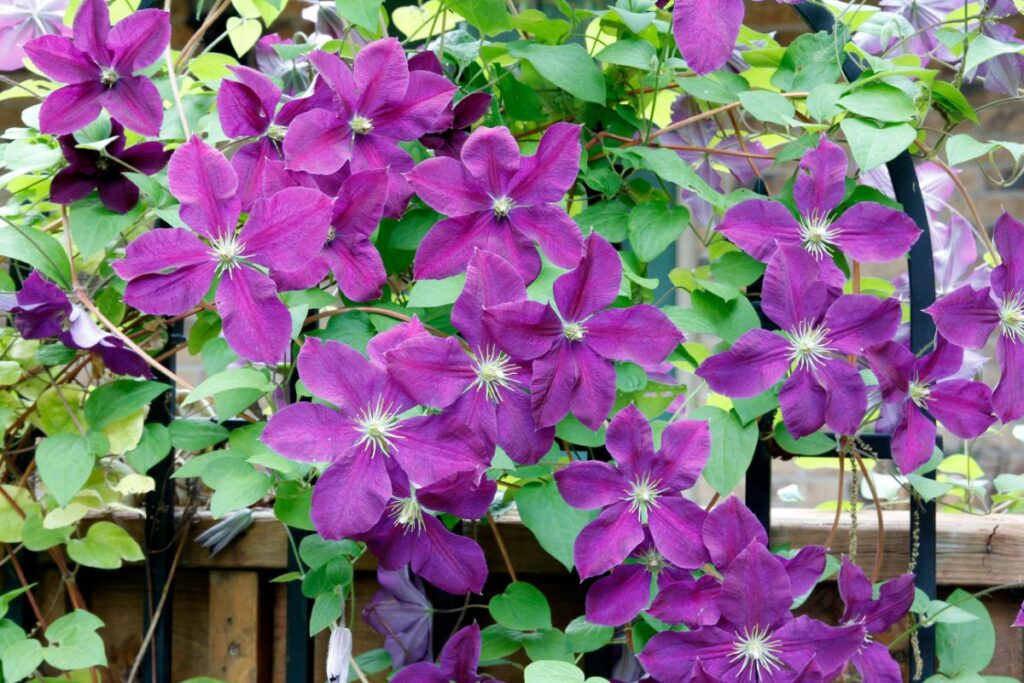Climbing plants, especially clematis, offer an array of vibrant blooms that can turn any modest garden into an exhibition of vertical splendor. Training clematis vines along a trellis not only can convert dull walls or fences into captivating garden highlights but can also craft secluded corners and frame quaint seating areas with natural elegance.
As you delve into the art of cultivating clematis, you’ll learn essential techniques for planting, training, and nurturing these plants. Proper care ensures robust health and an impressive display of flowers, enhancing your gardening skills and potentially making your garden a standout within the community.
Selecting an Appropriate Clematis Variety
Blooming Period: Ensure your choice blooms within your desired timeframe, from early spring to late fall.
Climate Fit: Opt for a clematis that thrives in your area, considering sunlight exposure and temperature needs.
Size Consideration: Account for the plant’s potential growth, with some reaching 20 feet.
Choosing an Ideal Clematis Spot
- Sunlight: Pick a location with direct sunlight for a minimum of six hours daily.
- Wind Protection: Select a sheltered area to prevent damage to plants and supports.
- Soil Quality: Use soil that drains well and is rich in organic content.
Selecting a Robust Climbing Support
- Strength: Opt for a trellis robust enough to uphold a mature clematis’s weight.
- Design: Choose either a freestanding structure or one that affiliates with a wall/fence.
- Timing: Ensure the trellis is in place prior to planting to prevent root harm.
Plant Installation Technique for Clematis
- Prepare a spacious hole, approximately double the width and equal in depth to the container your plant arrived in.
- Position your clematis so its base is 2-3 inches beneath the soil surface to promote growth of new stems.
- Refill the excavation with a blend of native soil and compost, ensuring solidity to remove any air voids.
Cultivating Clematis: Training and Pruning Techniques
- Securely fasten clematis stems to supports using gentle, flexible ties to protect the stems.
- Prune based on flowering time: early bloomers after winter; late varieties post-flowering.
- Inspect and loosen plant ties to prevent damage as the clematis grows.
Sustaining Your Clematis Vine
- Water Needs: Ensure consistent soil moisture without causing water stagnation, particularly in dry spells.
- Nutrition: Apply an even mix of nutrients in early spring and consider a second round midsummer for optimal growth and blooms.
- Root Protection: Spread mulching material around the plant’s base to maintain cool soil and sufficient moisture.



thank you. I’m a novice, started my 1st this year.
so, how/when do I begin cultivating seeds w grow lights or when should I plant in yard? I understand they enjoy a cold season before grabbing hold (stratification?)